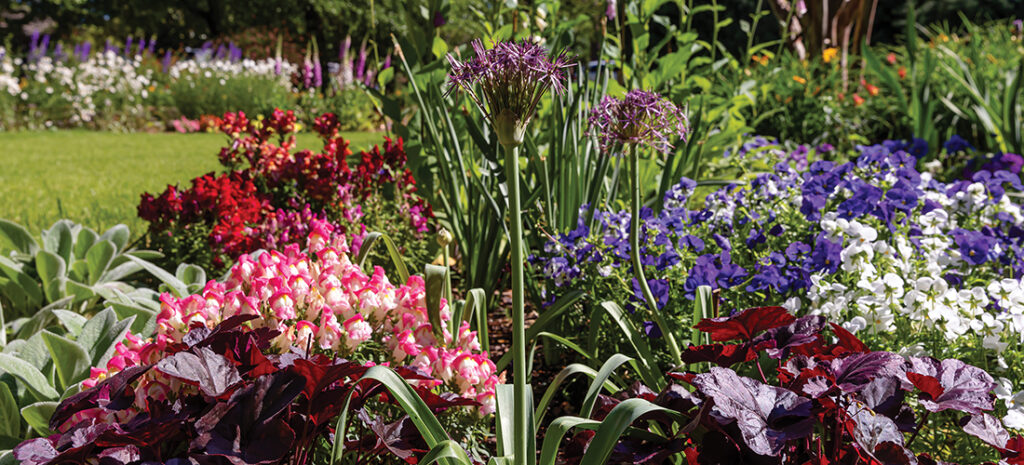A Touch of England

Creating a cottage garden in Pinehurst
By Rob VanderVoort
Photographs by John Gessner
Cottage gardening originally developed in England, using dense, informal plantings of native flowers and herbs to create the most charming effects. When I was asked to design a garden for a property off Pinehurst No. 3 I was excited because I knew the house and was sure it would work perfectly with the cottage garden style. The beds feature foxgloves, daisies, iris, larkspurs, columbines, snapdragons and violas, all traditional cottage garden plants.
I like to keep the iris and columbines close to the path. Columbine is best there because the flowers are so complex. They are usually two-toned, the light petals contrasting with the darker, spurred sepals that make the flowers look like a group of small birds. This intricacy has to be seen up close to be appreciated. Columbines look great by a gate but are lost in the distance.
Iris, in contrast, can be seen from the street. I keep it by the path to show off its foliage. Unlike most perennials that go dormant in the winter, the grayish, lance-shaped leaves of the iris persist year-round. They have a striking, sculptural quality that is enhanced by proximity to hardscape elements like fences and walks. They also play nicely with masses of fuzzy gray lamb’s ears, the contrasting texture set off by a similarity of color.
Larkspurs and oxeye daisies form the bulk of the planting. These bloom consistently at the same time as foxgloves, so their cool blue and the white can set off the warm dark pink of the foxgloves. And, oh, the foxgloves! They are truly magnificent. Their height and spire-like form give an architectural element to the mixed plantings. Snapdragons echo their form on a smaller scale, and violas bring the color down to the ground plane.
You won’t often find foxgloves in garden centers, except the occasional blooming plant in the spring. I start mine from seed in mid-summer and set them out in the fall. I find this technique works for many biennials and perennials that do well in regions north of us but can’t take our summer heat. Essentially you treat them like over-wintered annuals. Sow them in the summer, transplant them out in the fall, enjoy the flowers in the spring, and then remove the plants when they’re finished blooming in May or June. Hollyhocks, delphinium, sweet William, bells of Ireland, snapdragons and sweet peas all do well with this treatment, although I’d wait till Christmas to sow the sweet peas.
If you’re interested in trying a cottage garden of your own, a handy resource is Cool Flowers, a great short book by Lisa Mason Ziegler. Ziegler is a cut flower grower in the Virginia Beach, Virginia, area, in the same horticultural zone as Pinehurst. She explains this technique in greater detail. I wish you luck! PS
Robert VanderVoort studied and taught landscape architecture at N.C. State University and has gardened in the Sandhills for more years than he cares to say. Reach him at voortex16@gmail.com.
